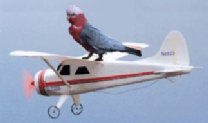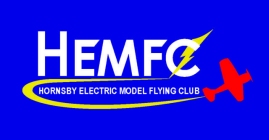| |
|
Hornsby Electric Model Flying Club Inc.
Flying Guidelines & Code of Conduct
|
Don't
be a
galah
|

|
The flying of model aircraft comes under the regulations of the Civil Aviation Authority,
the MAAA and MAS NSW where the HEMFC is affiliated for registration and insurance purposes.
At Fagan Park, we are also required to comply with all requirements of Hornsby Shire Council.
- Anyone flying must be a paid up member of this club or a visitor from another registered club.
Your registration card must be available for inspection if requested.
Random checks will be made by Park and/or Council staff to ensure that only licenced people are flying.
- Only 27MHz (under supervision by an experienced pilot), 36MHz or 2.4GHz transmitters may be used.
Your 2.4GHz transmitter must comply with approved standards as per the
MAAA Equipment Policy MOP058.
- Before flying:
- a key must be placed on the frequency board if using 36MHz band (but not for 2.4GHz),
- pilot's details entered in the HEMFC log book or Visitors log book on the table (or in the flying box), and
- the fire extinguisher box must be opened.
- At least one club member, acting as marshall (not flying), must observe the flying at all times.
The role of the marshall is to ensure that no flying intrusions into no-fly zones occur.
It is also the role of the marshall to warn members of the public not to venture into the flying area.
It is the responsibility of each pilot to ensure they are aware of which club member(s) will be observing flights
and inform the observer(s) of their pending launch prior to moving to the flight-box.
- In the event of members of the public crossing the airfield, pilots are to land their plane
if it is safe to do so, and wait until the area is clear to resume flying.
- All flying must take place within the designated flying area
(see map).
At no time must aircraft fly outside this boundary.
Our height restriction is 400 feet above ground level.
- The flight area west of the creek and south of the flight-box (see field map
and view from Flight-box) is not to be used for high-level flying.
Aircraft must keep low (i.e. near line-of-site to the top-edge of the far trees) and use this area primarily
for landing approaches. All pattern and glider flights are to be kept to the area over and to the east
of the creek when aircraft is south of the flight-box.
- Flying times are as listed below:
Monday
Tuesday
Wednesday
Thursday |
8am - 1pm
8am - 1pm
8am - 4pm
8am - 1pm |
|
Friday
Saturday
Sunday |
8am - 1pm
8am - 1pm
8am - 4pm |
- Noise of an aircraft must not exceed 90 decibels at 5 meters.
A Committee member will check your aircraft with our noise meter if in doubt.
- All take offs must be in either of the two directions shown,
depending on wind conditions. Take off must always be forward
of and away from the flight box and only when the field is clear
(see map).
- All pilots flying must move to the designated flight box and remain in this
area for the full duration of the flight.
This will enable communication between all pilots at all times.
The only exception is pilots retrieving their aircraft as detailed below.
- Verbal communication must be made with calls of:
- "Launching" before taking off.
- "Landing" when on landing approach.
A courtesy call of "Going Around" should be made if landing is aborted.
- "On the field" before collecting your aircraft from the field.
- These calls must be acknowledged with a response of "OK" by all
other pilots in the flight box before proceeding.
- "Clear" when leaving the field with your aircraft.
- "NO CONTROL! " if there is any loss of flight control.
- No more than five aircraft are to be flying at any one time.
Gliders maintaining an altitude of over 150 FAG are excempt from this count.
- No low-level flying over the field whilst anyone is walking on the field.
- Any aircraft requiring special clearance where pilot and assistant are required to locate
outside the flight box can be made ONLY when there are no other aircraft flying.
This activity needs to be agreed by all pilots and supervised by a safety officer
or committee member to ensure this is the only flight in progress.
If the pilot returns to the flight box, normal operations may be resumed.
- Pilots who are not flying, family members and members of the public must remain in
the pit area and are not allowed on the field at any time.
The exception being pilots retrieving their aircraft as detailed above.
- Flying must be conducted in a safe and responsible manner.
Aircraft manoeuvres must be performed well clear of the pit area and in a manner that minimises risks to
the people in this area (factors to consider include aircraft size, weight, speed and altitude).
Similar consideration must be given to the Pilot Box.
- An area for helicopter low-level practice flying is available at the south end of the flying field
just outside of the pit area (see map).
Helicopter circuit flying must occur from the flight box over the normal flying area.
- The last person to exit from the field, must place the flight box cones, wind sock and
sign-in log folder in the frequency box and lock it and lock the fire extinguisher box,
then close and lock the gate (padlock through padlock).
Happy Flying & Safe Landing
|



